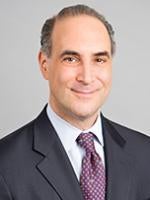On May 12, 2020, the Federal Reserve Bank of New York (the “Fed”) released its initial draft of frequently asked questions (the “Initial FAQs”) [1] relating to the Term Asset-Backed Securities Loan Facility program (“TALF 2.0”) under the Coronavirus Aid, Relief, and Economic Security Act (“CARES Act”). TALF 2.0 is designed to facilitate the rapid deployment of credit by providing potential borrowers with low-cost financing for the acquisition of asset-backed securities (“ABS”) and commercial mortgage-backed securities.
The Initial FAQs left open a number of questions, specifically the scope of the required borrower certification that it is “unable to secure adequate credit accommodations from other banking institutions.” (emphasis added). The Initial FAQs noted that a “[l]ack of adequate credit does not mean that no credit is available… [l]ending may be available, but at prices or on conditions that are inconsistent with a normal, well-functioning market.” On May 26, 2020, the Fed released a second round of frequently asked questions regarding TALF 2.0 (the “Additional FAQs”), clarifying certain items, most notably, the borrower certification.
1. Clarification of the Borrower Certification Regarding Adequate Credit Accommodations
The Additional FAQs clarified that a “[l]ack of adequate credit does not mean that no credit is available. Credit may be available, but inadequate in its amount, price, or terms because, for example, ABS spreads are elevated relative to normal market conditions” (emphasis added).
Our Take: The Initial FAQs’ explanation of the adequate credit accommodation certification lacked clarity as to what borrowers must certify to. Borrowers’ concerns about this ambiguity could have chilled the market for TALF 2.0 borrowings. The clarification provides a helpful baseline on which TALF 2.0 borrowers can rely, a baseline that should be relatively easy to satisfy. As the Initial FAQs and Additional FAQs expressly acknowledge, TALF 2.0 exists precisely because ABS spreads are elevated. We note that the certification itself (Appendix 2B) does not yet include any of the Additional FAQs’ clarifications. It remains to be seen whether the Fed will revise Appendix 2B or if TALF 2.0 borrowers must rely on the Additional FAQs with respect to this certification. In either case, given the issuance of the Additional FAQs, TALF 2.0 borrowers can more readily provide the requisite certification.
2. Clarification of the Types of Acceptable Credit Ratings
As the Fed has previously noted, in order for ABS to be eligible TALF 2.0 collateral, the ABS had to have, among other requirements, a credit rating in the highest long-term or, if no long-term rating is available, the highest short-term investment-grade rating category from at least two eligible nationally recognized statistical rating organizations (“NRSROs”). The Fed clarified that one of the long-term or short-term ratings must be from Fitch Ratings, Inc., Moody’s Investors Service, Inc., or S&P Global Ratings.
Our Take: Various members of the Senate Banking and House Financial Services Committee and other stakeholders have been pressing the Fed over the last several weeks to clarify which entities count as a NRSRO. Many of them have also pressed the Fed to expand the list of acceptable NRSROs beyond the “big three,” i.e., Fitch, Moody’s, and S&P Global Ratings. The Fed has partially acquiesced to these requests, as the second rating may be obtained from another NRSRO.
3. Clarification of Unsolicited Credit Ratings
The Fed also clarified that unsolicited ratings will not be considered in determining whether collateral is eligible under TALF 2.0.
Our Take: The Fed’s clarification that a rating must be solicited to qualify, will reduce, though perhaps not to a significant extent, the scope of eligible TALF 2.0 collateral.
As we approach June 17, 2020, the first subscription date for the TALF 2.0 loans, the Fed may issue additional guidance and clarifications regarding TALF 2.0. Please do not hesitate to contact any of the authors or your regular contacts at K&L Gates LLP for further insight into these FAQs and opportunities introduced by TALF 2.0 more broadly.



 i
i


